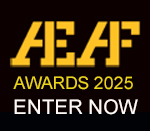Short Film
Education & Infographics
The Dreadnought of The Darling
Ample Projects
The Dreadnought of The Darling
By Charles E.W. Bean
The Dreadnought of The Darling is a short animated film adaptation of Charles E.W. Bean’s book of the same name, first published in 1911. Our adaptation is an historically accurate recreation of the Bourke that Bean saw when he visited 113 years ago, and forms part of the permanent displays in Building 3 at Bourke Exhibition and Cultural Centre. The purpose of this film is to show Bourke as it was as a port on The Darling River. A window into the past.
The riverboat era is a time that many white people in Bourke reflect on as a golden age. This nostalgic view is not held by many, and it is pointed out at the Brewarrina Aboriginal Museum, that an entire section of the ancient Brewarrina fish traps were removed to allow passage for the river boats.
In 1908 and 1909 C.E.W. Bean travelled twice to Bourke and the surrounding regions on two assignments, one for the Sydney Morning Herald, and the other for the Sydney Mail. The first assignment was a report on the wool industry in the region. A series of articles which were later compiled and became an Australian classic novel, On The Wool Track. The second series of articles for the Sydney Mail were a report on the declining river industry in Bourke in and the surrounding the Darling River, which later became published as the book The Dreadnought of the Darling.
To design our animated film, we used CEW Bean’s accounts of Bourke, as well as documentary photography from a number of public collections including The State Library of South Australia, and the Mitchell Library in Sydney, The Australian War Memorial, The National Library of Australia and the Art Gallery of NSW, to recreate Bourke in 1909, during a period when Bourke was still defined primarily as an ‘inland port town’ on the Darling River. River boats came and went continuously, delivering wool to the three steam cranes on the wharves near to where the current wharf is in Bourke today.
The wool was then loaded onto trains at Bourke train station, which was at the very end of the railway line to Sydney, the longest continuous straight line of railway track in the world at the time of its construction in 1885.
In the book Bean explored and celebrated the culture of the river industry, observing that the government’s establishment of the railways would ultimately spell the demise of an industry that so many inland Australian’s had relied upon at the time. The river industry.
CREW
Adapted and Directed by
Nicholas Tory
Art Direction
Nicholas Tory
Art Direction - 3D Design and Animation
Oliver Abbott
Edit
Nicholas Tory
Storyboard
Nicholas Tory
Composite
Nicholas Tory and Jonathan Nix
Animation
Amy Bell
Backgrounds and Colour Design
Dinh Nguyen
Music
Alex Dray
Sound Design
Alex Dray
Produced by
Nicholas Tory
Software
After Effects, Photoshop, Toon Boom Harmony, Blender, Cinema 4D



